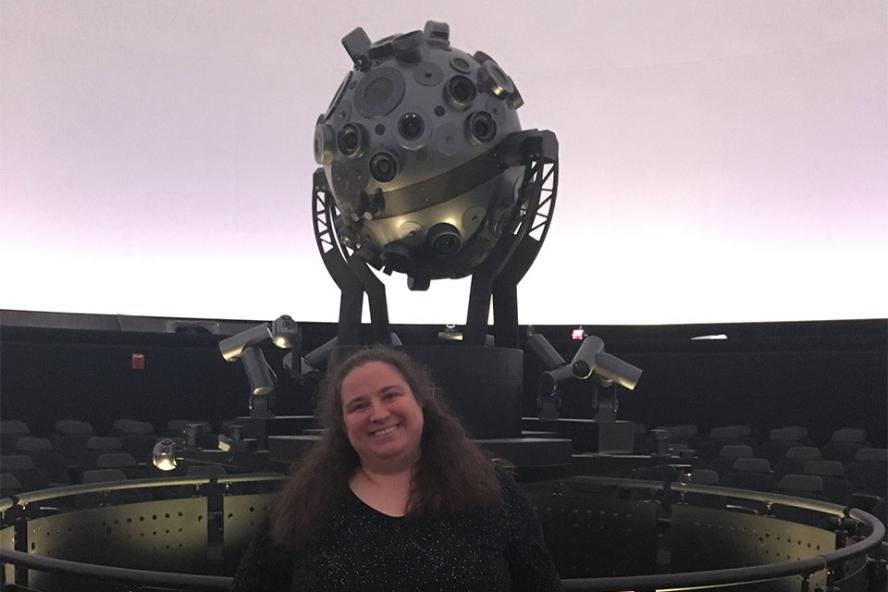Instructor Spotlight: Carie Cardamone

Tell us about your background and what inspired you to teach this course?
Carie Cardamone: I first imagined this course while I was working at the Boston Museum of Science Charles Hayden Planetarium. As an astronomer and teacher, for years I’ve thought about the stories science tells about the stars - why they shine, what they are made of, where they are now, how they came to be and their ultimate fates. Yet, it was in the planetarium I truly began to appreciate the many ways throughout history humans have used stories to understand the bright lights seen in the night sky - through art, history, mathematics, and science.
As I drew on my studies of archaeoastronomy and learned from my talented peers at the museum, I also became troubled by the way that all the stories commonly told and easily researched arose from a single perspective - drawing a straight line from the Babylonians, through the Greeks and Romans right to the present day International Astronomical Union's official 88 Constellations. I was excited that in this course, I could collaborate with the students to begin to decenter this Colonialist history by exploring how cultures around the world tell stories and find meaning in the Night Sky, and by viewing science as one of many stories humanity has to tell.
What is your favorite story or myth about the sky?
CC: It’s so hard to choose one! However, I could point to a triangle of three bright stars featured prominently in the summer & fall from the constellations of Cygnus the swan, Lyra the musical harp and Aquila the flying eagle. There are stories from ancient Mediterranean civilizations that gave us their names, but my favorite story comes from Japan. In this story, the brightest star in Lyra (Vega) is the princess Orihime who wove by the banks of Amanogawa or the river of heaven (what we call the Milkyway). She looked across the river and fell in love with the young herdsman Hikoboshi (represented by Altair, the brightest star in Aquila). The story tells how they are separated from each other, except for one day each year when a flock of magpies flies over the constellation of Cygnus connecting the two lovers. This story is celebrated in the festival of Tanabata each year at a time near when the Earth travels through the old path of a comet. Bright streaks of light, called shooting stars, can often be seen as the small dust particles left behind by the comet's voyage burn up in our atmosphere - one could even imagine these look like a flock of birds traveling across the starry night sky.
To me the physics of the stars themselves is an interwoven backdrop to the night sky patterns and their stories. Each star is an awe-inspiring demonstration of the physics of energy - converting mass into energy (E[energy]=m[mass]c^2[speed of light squared] of course!) and turning that energy into light that shines across the Universe. One of the reasons I love to talk about the story of the weaving princess is that the bright stars Vega & Altair are both just slightly larger than our sun (Main Sequence stars of type A), and located nearby, for stars! The stars might all appear very similar at first glance, but each has a unique story - some with solar systems of their own.
What is something you are looking forward to in your course later in the semester?
CC: Well my favorite thing so far has been the discussion on decolonizing science - everyone in the class was so engaged in listening to each other, diving deep into the variety of readings we explored and generously sharing their own perspectives and questions. So looking ahead, I’m really looking forward to the last portion of the semester, where students will lead us through the stories they’ve chosen to explore. I can’t wait to see the topics that have most interested them, and how they choose to share these ideas with the rest of the class.
Carie Cardamone is the Associate Director for STEM & Professional Schools at Tufts Center for the Enhancement of Learning & Teaching (CELT). She is an astronomer passionate about making science education both inclusive and exciting. She holds a PhD in Astronomy from Yale University.